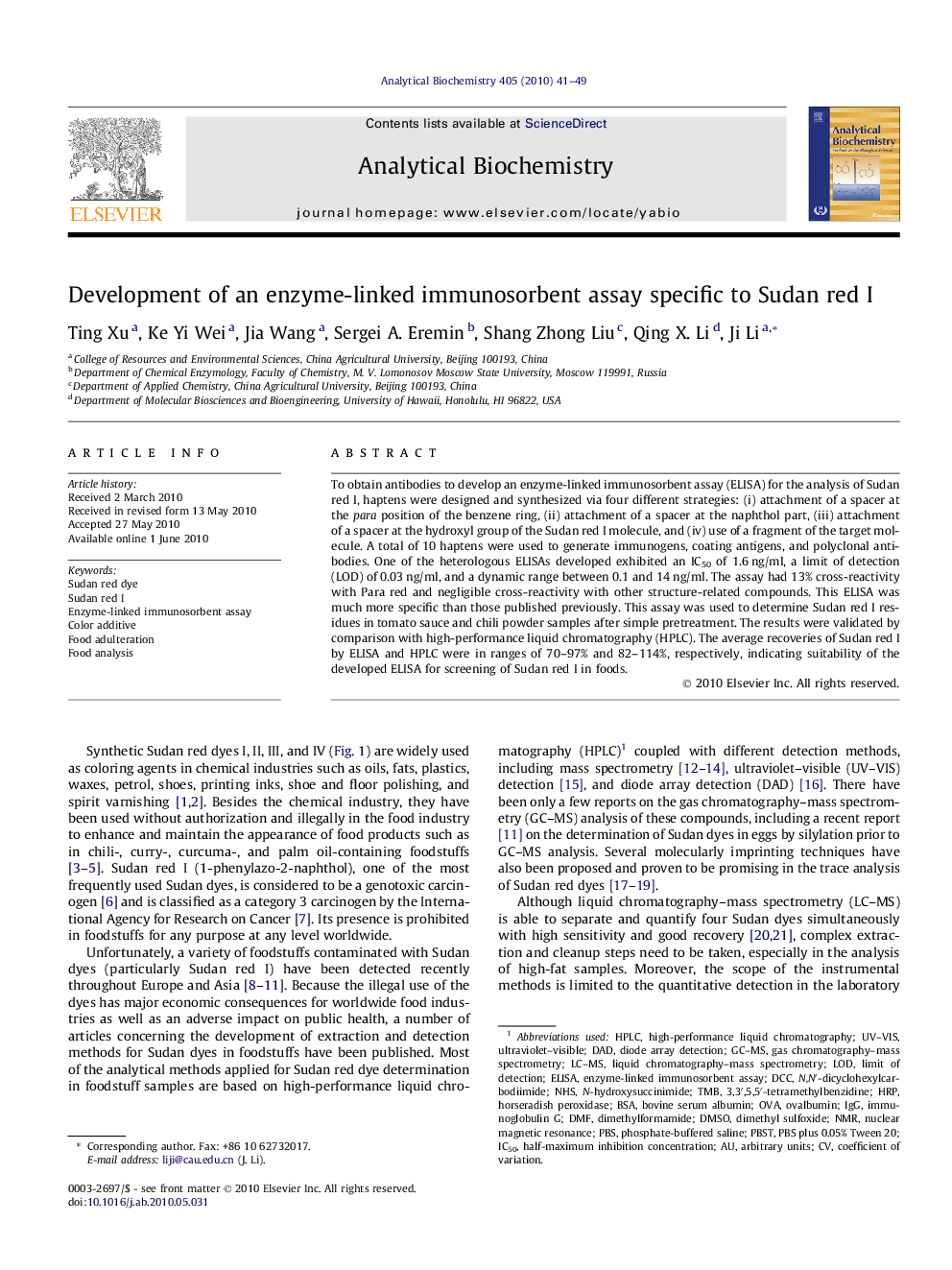| Article ID | Journal | Published Year | Pages | File Type |
|---|---|---|---|---|
| 1173904 | Analytical Biochemistry | 2010 | 9 Pages |
To obtain antibodies to develop an enzyme-linked immunosorbent assay (ELISA) for the analysis of Sudan red I, haptens were designed and synthesized via four different strategies: (i) attachment of a spacer at the para position of the benzene ring, (ii) attachment of a spacer at the naphthol part, (iii) attachment of a spacer at the hydroxyl group of the Sudan red I molecule, and (iv) use of a fragment of the target molecule. A total of 10 haptens were used to generate immunogens, coating antigens, and polyclonal antibodies. One of the heterologous ELISAs developed exhibited an IC50 of 1.6 ng/ml, a limit of detection (LOD) of 0.03 ng/ml, and a dynamic range between 0.1 and 14 ng/ml. The assay had 13% cross-reactivity with Para red and negligible cross-reactivity with other structure-related compounds. This ELISA was much more specific than those published previously. This assay was used to determine Sudan red I residues in tomato sauce and chili powder samples after simple pretreatment. The results were validated by comparison with high-performance liquid chromatography (HPLC). The average recoveries of Sudan red I by ELISA and HPLC were in ranges of 70–97% and 82–114%, respectively, indicating suitability of the developed ELISA for screening of Sudan red I in foods.
